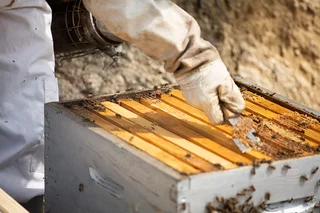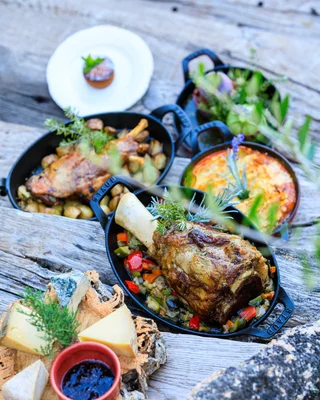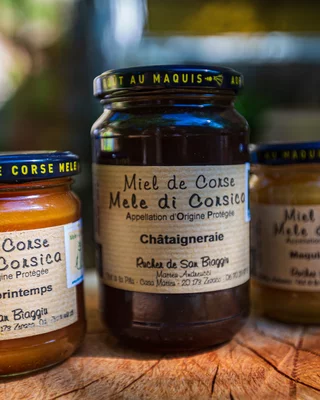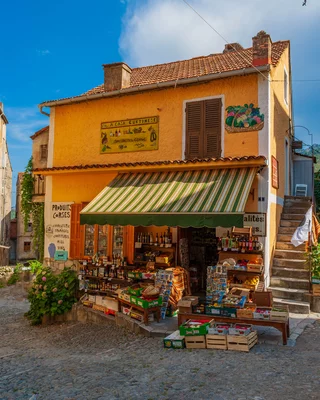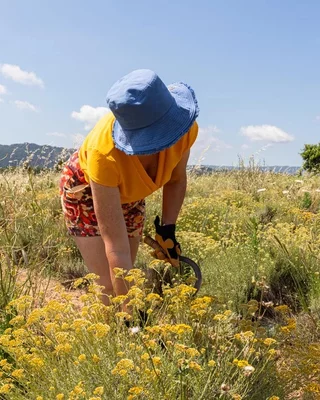Matteu Andreucci, beekeeper
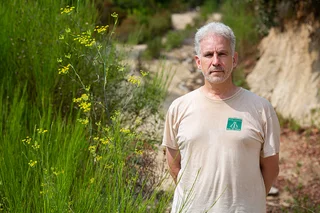
Is the story of your family business, handed down from father to son, emblematic of a certain "return to the roots and the land"?
I chose to settle in the village of Zevaco to perpetuate a family tradition that goes back several generations. Beekeeping is an important part of my history, a passion that has grown into its current development.
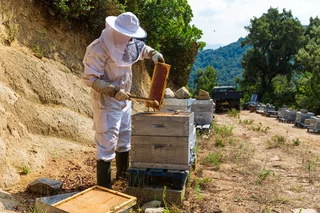
Rural Corsica offers an unspoilt environment, and living here requires simplicity in human relations, respect for nature and...a certain entrepreneurial daring! This choice of authenticity has led me to exploit my livestock, which enables me to offer spring and autumn maquis honey, chestnut honey and honeydew honey from the maquis, at a rate of 4 harvests a year.
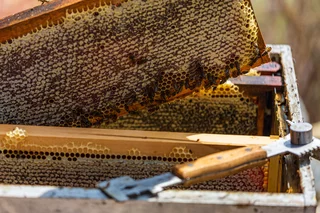
What triggered your move from engineer to beekeeper?
I've been beekeeping since the age of 12. After a career spanning more than 20 years in engineering, I acquired a rigorous work ethic that I put to good use in my daily life. It's also part of my DNA.
What's your favorite part of your job?
In the beekeeping profession, there are several layers, and all of them are important. There are the bees, the hives and their locations, production, new product development and marketing.
What's interesting about this job is the need to act by deciphering environmental and seasonal data. When I'm working in an apiary, I have to watch, observe, listen to what the bees are telling me, listen to my environment, integrate production conditions and good beekeeping practices. Once I've collected all these particular conditions and situations, the way I work begins to emerge and becomes obvious.
How does a beehive work?
In a hive there are 3 types of individuals. The queen is the most important element, because "when you have a good queen, you have a good hive". That's why I breed queens every year.
The workers, in greater numbers. They collect pollen and nectar, transform it into honey and store it in the cells. One of the key points is to maintain a high population level before the honey flow.
And then there are the males, known as "drones", essential for queen fertilization. One of my apiaries is dedicated to them: the fertilization apiary. The beehive is a highly organized society, where each is nothing without the other.
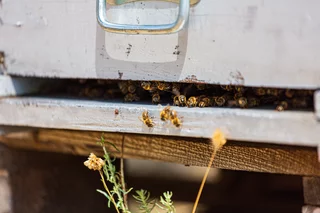
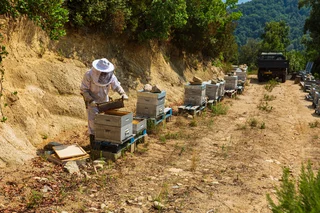
How many hives do you need to make a living from your operation?
The number of hives varies from region to region. On the Continent, a minimum of 250 hives is enough to make a living as a professional. Winters are longer, which has a direct impact on productivity. A favorable climate is specific to Corsica for beekeeping. The winter period for bees is shorter, harvests are more numerous and productivity is higher.
In Corsica, a minimum of 125 hives is enough to make a living.
Have you noticed a decline in the Corsican endemic bee population in recent years?
I haven't noticed a drop in the population, but a drop in production, which I associate with climatic disturbances. Periods of drought are more intense and frequent, as are rainy spells. During these periods, the bees consume their provisions instead of building them up.
What does the Miel de Corse PDO actually do for you?
The " miel de Corse-Mele di Corsica " PDO is a real tool. The PDO has structured the industry since 1998, so that anyone setting up in beekeeping can benefit from decades of experience.
It has brought us a range of 6 honeys from typical Corsican spontaneous vegetation. This quality label guarantees the origin of the product, that the beekeeper works with a local bee and local know-how, since he or she is committed to respecting very strict specifications. The PDO is also a partner of the University of Corte, where a great deal of research is carried out.
Can Corsican honey be considered organic?
Corsica's plant cover consists mainly of maquis, a spontaneous vegetation that is unique to this territory. The terrain is very mountainous and difficult to mechanize. This is fortunate, as I'm not affected by the pesticide-intensive large-scale cultivation we see on the Continent. It's a real asset for Corsican bees and the quality of the product.

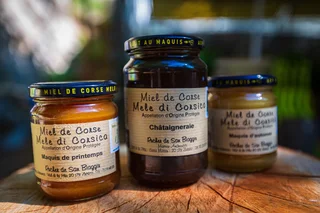
What is the extent of the range?
Corsican PDO honeys come in 6 distinct products. The first is " SPRING HONEY ", which is harvested in April-May on sites near the coast. It is composed mainly of Asphodel, Willow and citrus fruits in general.
The second is " SPRING MAQUIS HONEY ", harvested from the sea to the mountains. It is composed mainly of tree heather (Erica arborea), lavender and broom.
The third is " CHATAIGNERAIE HONEY ", with the Chestnut tree in bloom from June to July, but with all the vegetation of the maquis at the time. It is harvested by the end of July at the latest.
SUMMER MAQUIS HONEY " is harvested at the end of August in the high valleys. It is a very light honey composed of Anthyllis, thyme and brambles. From May to September, " MIEL DE MIELLATS DU MAQUIS " is harvested on sites near the coast. The honey is almost black, with a higher viscosity and a licorice aroma.
At the end of the year, AUTUMN MAQUIS HONEY is harvested from November to December. The end-of-year vegetation includes arbutus, which tints this honey with an almost pure, yet gentle bitterness. It's a surprising honey, but one that is particularly appreciated by connoisseurs.
How do you see your profession evolving in the future? How can we energize and diversify the market?
Beekeeping is a fine profession, yes, and an essential cog in the pollination of plant species.
Albert Einstein once said, " If the bee disappeared from the face of the earth, man would only have four years to live .
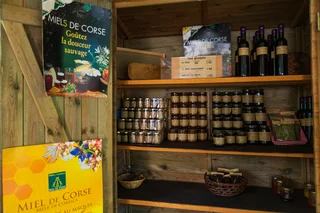
Even if everyone is aware of the need to protect bees, the threats and the risk of seeing them disappear are real. I'm campaigning for the sanctuary of this island territory, by prohibiting the entry of plant and animal species that seriously damage this characteristic Corsican environment. I'm diversifying my activity with other products (propolis, pollen, aperitifs, aromatic plants...) to satisfy my curiosity and creativity, and to prolong and revitalize the history of the san biaggiu apiary. SAN BIAGGIU APIARY. But I've always put quality before quantity.
Before we leave, and to thank you for your welcome, would you like to share a family recipe with us?
For gingerbread, I recommend " MIEL DE CHATAIGNERAIE ", which lends itself particularly well. And for gourmets, I suggest two combinations: One tablespoon of " MIEL DE MAQUIS DE PRINTEMPS " or " MIEL DE CHATAIGNERAIE ", depending on taste, for 250g of BROCCIU.
Do not mix, but draw a honey drizzle for presentation. Pork ribs caramelized with honey. Start cooking over low heat with " SPRING HONEY" or " AUTUMN HONEY ", then turn up the heat to caramelize (without burning), just before serving.
